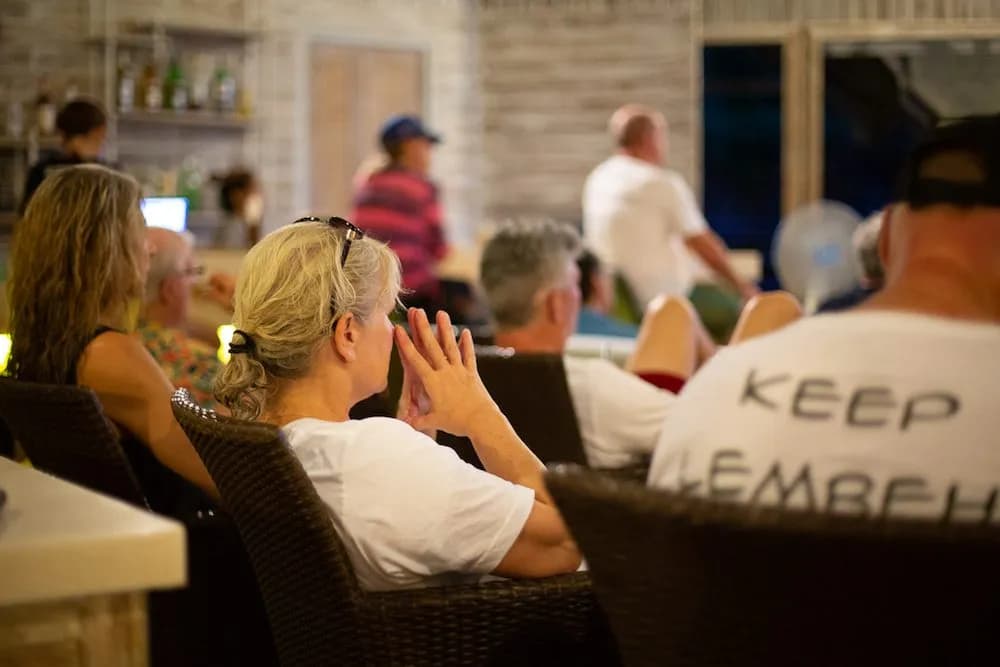March of the Nudis! – Part II
Imagine only having a few days to mate, copulate and reproduce before you die! That’s the sad truth for these amazingly unique and colorful butterflies of the sea. “The life span of sea slugs is relatively short, after reaching sexual maturity they only have a few days to a few months to find a mate and copulate successfully”.
Please join us each month on our journeys of discovery. Starting in April on the first Monday of every month, we will delve into a new theme. Lembeh Resort and critters@Lembeh Resort will feature special content, photos and videos on marine life. Friends from the dive community, researchers, professional underwater photographers, underwater journalists and frequent travellers to Lembeh Strait in North Sulawesi will collaborate with us on exclusive articles, underwater photographs, underwater videos and more.
Part II of March of the Nudis, by Dave Behrens is our final installment of all things nudi! For past articles, photos and more view our older articles on our homepage.
March of the Nudis Part II
By David Behrens
Unlike almost all mollusks, nudibranchs are hermaphroditic, that is they possess both male and female sexual organs at the same time in adulthood. Individuals mate by aligning themselves head to tail, along the right side of the body, interlocking the male and female genitals at a common orifice.
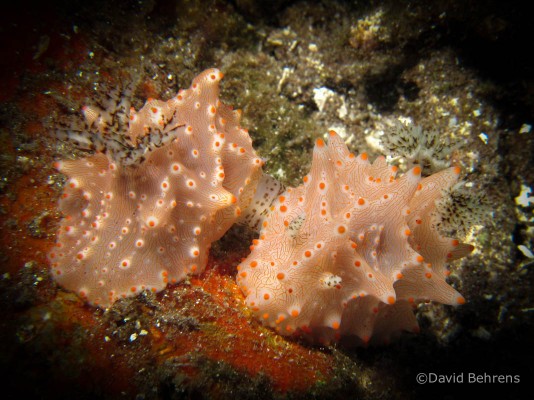
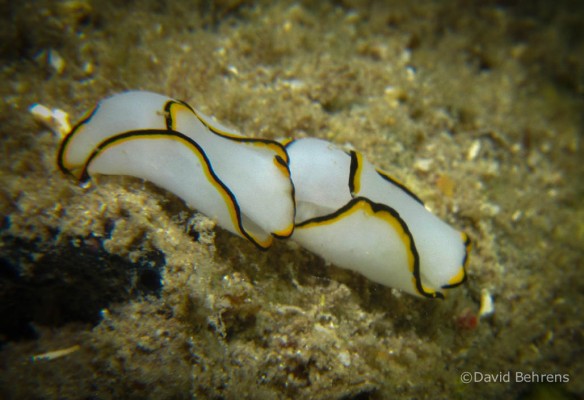
Here two Halgerda batangas mate by lining up side by side on their right side. In the photo to the right, a non-nudibranch, head-shield sea slug species shows a completely different approach to copulation.
Nudibranch eggs are as diverse as the adults in size, color and shape. Some egg masses like the adults advertise their toxic nature by their bright, aposematic colors.
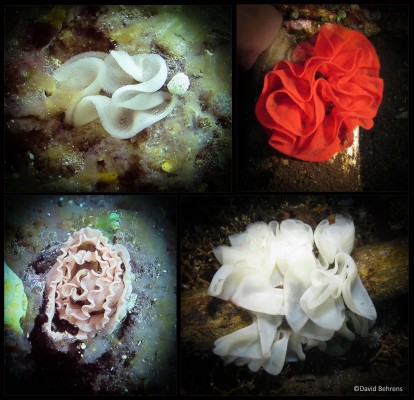
Nudibranch eggs are laid in coils, spirals, and zig-zags. Bright colors warn predators that the eggs are poisonous.
Nudibranchs employ completely unique and highly specialized series of defense strategies. This became necessary when the evolution of the group lead to the loss of their protective shell.
Aside from those species that evolved the ability to hide on the surface of their prey species by resembling its color and texture, two major defense strategies won out after the loss of the shell – chemical warfare and artillery.
Most dorids developed internal chemistry labs in the form of glands within the body that convert chemicals obtained from their sponge or tunicate prey into noxious, toxic chemicals they can then use to repel the attack for wanton predators.
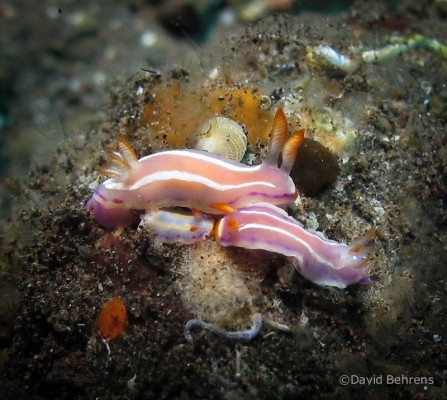
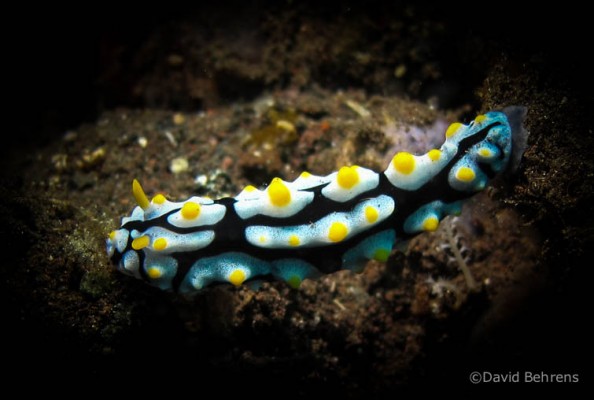
These two dorid species have acid glands along the edge of their mantles that secrete nasty chemicals.
Aeolid nudibranchs sequester stinging cells in their cerata to use as artillery against attack. These stinging cells called nematocysts look like microscopic harpoons. When attacked the aeolids point the tips of the cerata at the predator and fire the harpoons.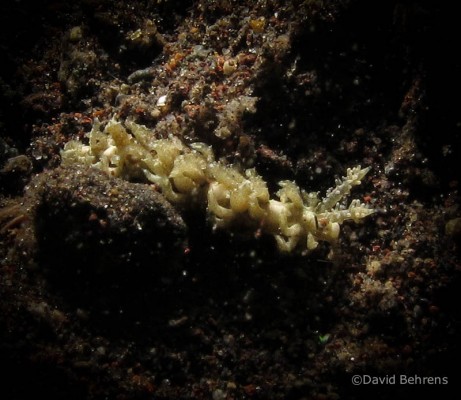
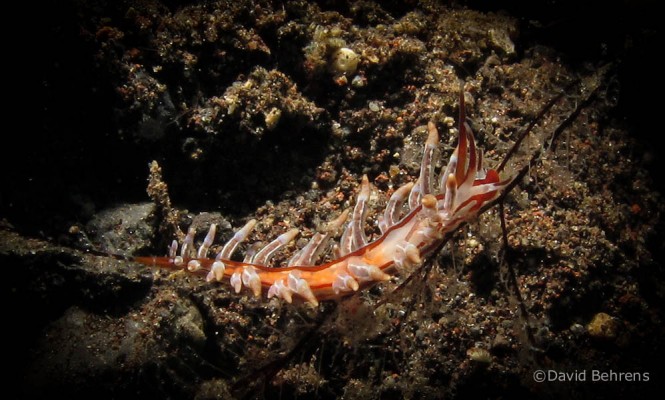
Aeolid nudibranchs store stinging cells they acquire from their cnidarian prey in the tips of their cerata to use as defensive artillery.
While we are aware of dozens, maybe hundreds, of relationships nudibranchs have with other species, the most interesting is the symbiotic relationship some species have with microscopic cells they get from the soft corals they feed on. Called zooxanthellae, these cells carry out the process of photosynthesis using energy from sunlight to chemically convert water and carbon dioxide into sugar and oxygen, benefiting the slug. Once the slug has filled its digestive gland with zooxanthellae it literally no longer needs to feed or breathe. The bi-products of photosynthesis provide both for the host.
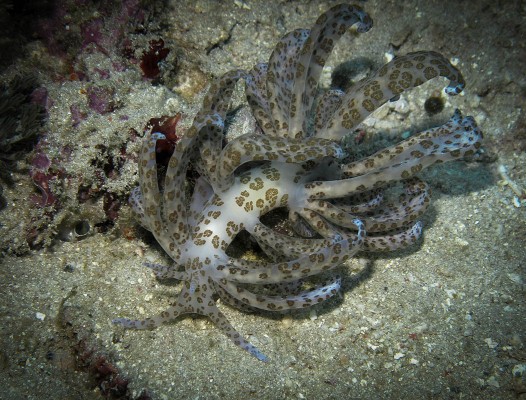
The solar sea slug Phyllodesmium gets the golden colored zooxanthellae seen here in its tissue from the soft coral it feeds on. Then the rest is all about photosynthesis and the production of sugar and oxygen benefiting the slug.
Come to Lembeh and observe these fascinating creatures yourself. Every dive has a surprise. Every dive will give you the chance to add to your nudibranch photograph library.
All of these species and topics and more will be covered in a new book coming out this fall. Watch for Nudibranchs and Sea Slugs – Indo-Pacific published by New World Publications.
A Note About the Author:
Dave Behrens is one of the world’s foremost experts on nudibranchs and is the author of 10 books and over 70 articles in technical journals. He is also currently writing for Scuba Diver Magazine (Korean version). He has recently been working on a newly revised edition of I.D. book “Nudibranchs & Sea Slugs: Indo Pacific” which will be available in the fall. The book will include over 1950 species and will feature 2400 beautiful colour photos so nudi lovers have a treat to look forward to. In the mean time, if you don’t already have a copy, you can check out his fabulous “Nudibranch Behaviour” book available at www.fishid.com, direct link to the book is here. Dave is always happy to help you identify that nudibranch you can’t find in the I.D. books and he can be contacted at davidwbehrens@gmail.com



